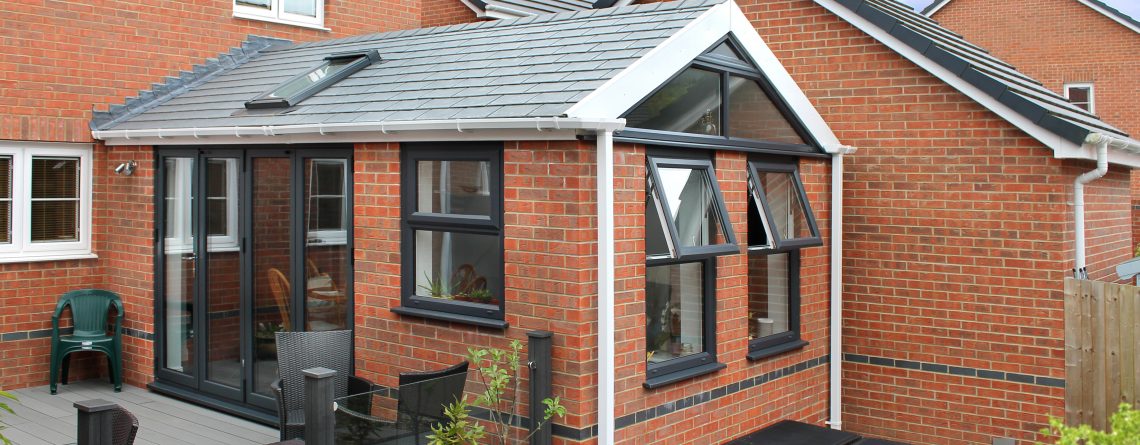Why is There Condensation on My Windows & Doors?
As a homeowner, there are not many things that can make you groan first thing in the morning, but noticing your windows and doors are covered in condensation will make you do just that. Unless you have time to spare to wipe the double glazing dry, or you’re lucky enough to have a small vacuum, this can be a task that is not carried out. But why do you have condensation in the first place, especially when you’ve invested in replacement double glazing? That’s why Window Warehouse has created this advice article.

What is Condensation?
Condensation is created from the conversion of water vapour in the atmosphere into liquid. The surrounding area in our homes always contains water vapour but is usually invisible to the naked eye. The warmer the eye, the more water vapour it can hold. However, there is a limit to the amount the air can hold for a given temperature.
When this limit is reached, the air becomes saturated. When the saturated air comes into contact with a surface that is at a lower temperature than itself, the air is chilled at the point of contact. It then sheds surplus water vapour onto that surface in the form of mist, and if excessive, droplets of moisture will form.
This is why on a cold morning, you can find your double glazing can be covered with condensation. Rooms, such as bathrooms and kitchens, are areas particularly susceptible to the issue. If you’ve invested in new double glazing and still getting condensation, it can be for a good reason!

What is?: Inside Condensation
When sleeping, two adults will produce one and a half pints of moisture in an eight hour period. This is absorbed as water vapour into the atmosphere. When cooking, steam clouds are absorbed into the atmosphere and a gas cooker can produce one-fifth of a gallon of water per hour. When you’re washing up, washing yourself or washing your clothes, and even indoor plants can contribute to the water vapour and internal condensation levels.

What is?: Outside Condensation
Outside condensation is formed when the outer double glazing pane drops below the outdoor dew point temperature. Customers that invest in brand new double glazing may still find that their windows and doors can be prone to condensation. This is due to the fact that modern units are created with low emissivity glass, which boasts advanced thermal properties. As a result, the outer glazing pane does not get warmed by heat escaping from the inside of your home, meaning the glass remains cooler compared to less energy efficient designs.
External condensation can be prominent in certain climatic conditions where there are high humidity levels and particularly cold weather. When this is the case, it is possible that external condensation can appear on some double glazing products but not others. This is because of the localised atmospheric conditions, such as shelter from nearby trees or buildings, wind speeds, variable air currents and varying levels of vegetation nearby.
Condensation on the outside of a brand new double glazing product is in no way a sign of a faulty unit. Instead, it illustrates clearly that the double glazing is actively working to reduce heat loss through the glass. This will help your home retain its heat for longer!

How to Prevent Condensation?
There are several simple tricks to prevent condensation within your home. Increasing the ventilation in the property for at least 20 minutes a day can change the air within your property. This will reduce the moisture content. Don’t leave your windows or doors open at night in cold weather, making sure to shut them and close the vents. This gives the internal part of your double glazing product the chance to heat up, reducing the change of moisture in the air hitting a cold surface and turning into condensation.
Using central heating effectively can have a positive effect on the condensation levels in your home. It is useful to put your central heating on regular intervals in cold weather. This will help to combat the internal condensation of your double glazing project.
By investing in new double glazing, you won’t be left carrying out any high maintenance tasks. Investing in double glazing manufactured by Window Warehouse will only need an occasional wipe down with a damp cloth. We recommend using warm soapy water and a damp cloth to clean the frame, and glass cleaner on the glass. We also recommend oiling the hinges and moving parts of your double glazing twice a year.
Double Glazing Prices
If you’re a homeowner looking to replace your double glazing, find your nearest Window Warehouse installer today. Simply enter your postcode to find your three nearest installers.
For installers looking to upgrade the old windows and doors of their customer’s home, look no further than Window Warehouse. You can place your order by calling 02392 327 744, email info@window-warehouse.co.uk, fill out our online contact form or start a quote.
- Halo Approved Installer Scheme is free to join from Window Warehouse - 19 October 2022
- Navigating Price Increases - 12 January 2022
- Window Warehouse Christmas Hours - 21 December 2021
